Heat Pumps, what are they and how do they work?
Posted by Radiators 4u on 10th Oct 2023

The marvels of modern technology have equipped us with numerous ways to maintain comfortable temperatures in our homes, regardless of the season. Amidst the myriad of heating and cooling options available, one stands out due to its efficiency, eco-friendliness, and versatility: the heat pump.
But what exactly is a heat pump, and how does it manage to both heat and cool spaces with seemingly effortless finesse? What economical radiators are suitable for use with a Heat pump? Dive into the world of thermodynamics with us as we unravel the mysteries behind this incredible piece of technology in our detailed exploration
What are Heat Pumps?
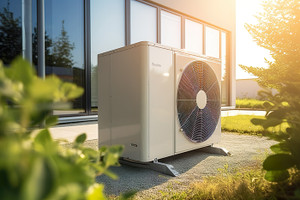
Heat pumps are advanced, energy-efficient systems that provide both heating and cooling by transferring heat from one location to another. According to the U.S. Department of Energy, a heat pump operates by moving heat, rather than generating it, which often makes it a more energy-efficient solution for temperature control compared to traditional furnaces and air conditioners.
In the cooler months, a heat pump will extract heat from the outside air or ground and transfer it inside to warm a building. Conversely, during warmer months, it will remove heat from inside the building and transfer it outside, thus cooling the interior.
The Environmental and Energy Study Institute (EESI) highlights that due to their energy efficiency, heat pumps can reduce electricity use for heating by approximately 50% when compared to electric resistance heating, like furnaces. As a result, heat pumps not only promise significant energy savings but also contribute to reduced greenhouse gas emissions.
How do heat pumps work?
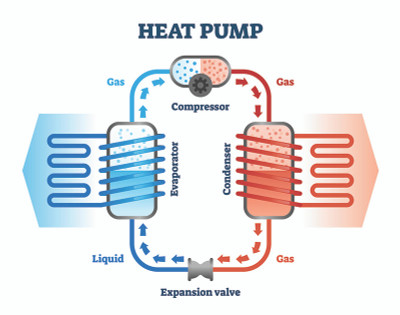
Heat pumps operate based on the principles of heat transfer, leveraging a refrigeration cycle similar to that found in air conditioners and refrigerators. At their core, they use a refrigerant—a substance that can easily absorb and release heat—as the medium for this transfer. In heating mode, the heat pump extracts heat from the outside environment, be it air, ground, or water, even when it feels cold outside.
This absorbed heat is then amplified and transferred to the inside of a building or home. Conversely, in cooling mode, the heat pump works in reverse, extracting heat from the interior and expelling it to the outside environment. This process is facilitated by a compressor, a condenser, an expansion valve, and an evaporator, which are the key components of the system.
The ability to reverse the heat flow direction is what allows a heat pump to provide both heating and cooling from a single unit.
What is the difference between air-sourced and ground-sourced heat pumps?
Air-sourced and ground-sourced heat pumps are both efficient methods of heating and cooling a space, but they harness heat from different sources and operate based on different principles. Here's a breakdown of the differences:
Air-Sourced Heat Pumps (ASHPs):
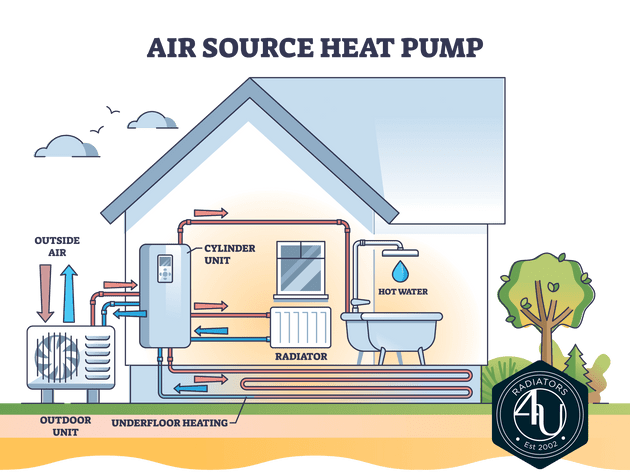
Heat Source/Sink: ASHPs extract or dissipate heat directly from or to the outside air. They absorb heat from the ambient air in the colder months and reverse the process to cool buildings during warmer months.
Efficiency Variability: The efficiency of ASHPs can be influenced by external air temperatures. As the outside air becomes extremely cold, most conventional ASHPs become less efficient. However, advancements in technology have led to the development of cold-climate air-source heat pumps that perform better in colder temperatures.
Installation: Generally easier and less expensive to install compared to ground-sourced systems, as they do not require underground piping.
Cost: Typically, the upfront cost for ASHPs is lower than for ground-sourced systems.
Ground-Sourced Heat Pumps (GSHPs) or Geothermal Heat Pumps:
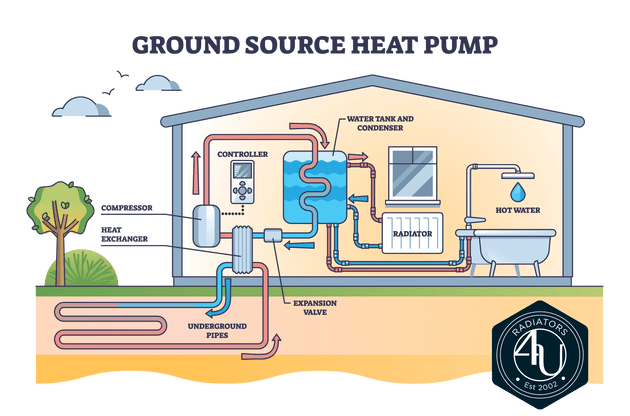
Heat Source/Sink: GSHPs exchange heat with the ground or groundwater. Since the temperature below the earth's surface remains relatively constant throughout the year, GSHPs can harness this stable temperature source for heating or cooling.
Efficiency Stability: GSHPs tend to be more efficient than ASHPs, especially in extreme outdoor temperatures. This is because underground temperatures are more stable than air temperatures, providing a more consistent source for heat exchange.
Installation: Installation requires trenches or wells to be dug, making it more complex and potentially more expensive than installing ASHPs.
Cost: The upfront costs for GSHPs are higher due to the need for ground loops, but they often have lower operational costs because of their higher efficiency. Over time, this can result in a return on investment.
Lifespan and Maintenance: GSHPs generally have longer lifespans and require less maintenance than ASHPs. The indoor components can last about 25 years, and the ground loop can last over 50 years.
In choosing between the two, considerations often include the climate of the location, the specific heating and cooling needs of the building, available land, and budget.
How do heat pumps save money on heating?
Heat pumps can lead to significant savings on heating costs due to several key factors:

Efficiency: One of the primary reasons heat pumps save money is their efficiency. Traditional heating systems, like electric furnaces or baseboard heaters, convert electricity directly into heat. Heat pumps, on the other hand, use electricity to move heat from one place to another, making the process more energy-efficient. For every unit of electricity a heat pump uses, it can produce multiple units of heat energy, resulting in an efficiency greater than 100%.
Reduced Electricity Consumption: Since heat pumps move heat rather than generate it, they can provide the same amount of warmth as traditional systems while using significantly less electricity. This reduced electricity consumption directly translates to reduced energy bills.
Dual Purpose: Heat pumps can both heat and cool a space. This means homeowners don't need separate systems for heating in winter and cooling in summer, leading to savings on installation, maintenance, and operational costs.
Advanced Technologies: Modern heat pumps come equipped with features like variable speed compressors, which adjust their speed based on the heating demand. This ensures the pump operates at optimal efficiency, consuming only as much power as necessary and further saving on energy costs.
Lower Maintenance Costs: Compared to traditional heating systems, heat pumps generally have fewer moving parts and can be less expensive to maintain. Furthermore, systems like ground-sourced heat pumps (or geothermal heat pumps) have components that can last much longer than typical heating systems, resulting in reduced replacement costs over time.
Incentives and Rebates: The UK government currently offers grants towards installing energy-efficient heat pump equipment. Homeowners can offset the initial installation costs and achieve quicker returns on their investment through these incentives.
Reduced Fossil Fuel Dependence: For homes that previously relied on oil or propane for heating, switching to a heat pump can result in substantial savings, especially when fossil fuel prices are volatile.
It's worth noting that the exact savings can vary based on factors like the local climate, electricity rates, and the specific heat pump model. However, in many cases, the operational savings from heat pumps can offset their higher initial costs in the long run.
Do Heat pumps work at lower water temperatures?
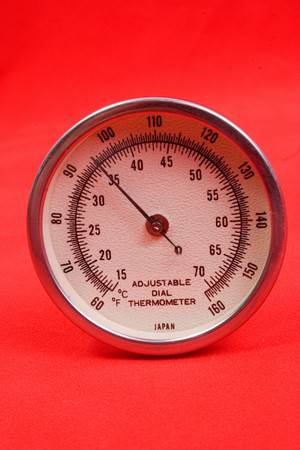
Yes, heat pumps, especially those designed for space heating in homes, typically operate at lower water temperatures than traditional heating systems like gas or oil boilers. Here's a more detailed explanation:
Optimal Efficiency at Lower Temperatures: Heat pumps are most efficient when producing lower temperature hot water, typically in the range of 35°C to 45°C (95°F to 113°F). This contrasts with conventional boilers, which often produce water temperatures around 60°C to 80°C (140°F to 176°F) or higher.
Radiant Heating Systems and Low-Temperature Radiators: Given the lower water temperatures, heat pump systems are often paired with radiant underfloor heating systems or specially designed low-temperature radiators. Both these systems distribute heat effectively at these lower temperatures, ensuring the space is adequately heated.
Longer Heating Cycles, Stable Indoor Climate: Operating at lower water temperatures means that heat pumps tend to run for longer cycles compared to traditional boilers. This results in a more consistent and stable indoor climate with fewer temperature fluctuations.
Modern Building Standards: New buildings and homes with good insulation and airtightness are especially suited for heat pump systems. The lower temperature differential is sufficient for heating, given the reduced heat loss from these modern constructions.
BTU Calculations: It is worth noting that BTU values differ depending upon the Boiler output. We typicaly use the Delta 50 temperature for traditional gas boilers, when calculating heating requirements for a heat pump we would recommend using a Delta 40 value to compensate for the lower water temperature.
Do all radiators work with Heat pumps

Not all radiators are ideally suited for heat pumps, but many can work with them if certain conditions are met. Here's a breakdown:
Standard Radiators: Traditional radiators are designed for higher water temperatures typically provided by boilers (around 60°C to 80°C or 140°F to 176°F). When used with the lower temperatures supplied by a heat pump (usually 35°C to 45°C or 95°F to 113°F), these radiators might not emit sufficient heat to warm a space effectively, especially on the coldest days.
Low-Temperature Economical Radiators: There are radiators specifically designed for the lower water temperatures produced by heat pumps. These radiators are often larger or have a greater surface area to effectively distribute the heat at these temperatures. Here at Radiators 4u we strongly recommend our range of Economic Aluminium Heat Pump Radiators as they run at lower temperatures and heat up quicker than their steel counterparts. We also recommend using double panel aluminium radiators to maximise space and heat.
Adjustments to Existing Radiators: It's sometimes possible to use existing radiators with a heat pump by making certain adjustments:
- Increasing the size or number of radiators to compensate for the lower water temperature.
- Adjusting the flow rate of the heating medium (water) through the radiator.
- Improving home insulation and sealing gaps to reduce the overall heating demand.
Heat Output and Radiator Size: The heat output of a radiator is proportional to the difference in temperature between the radiator and the room. With a lower water temperature from a heat pump, the radiator will emit less heat. Therefore, for adequate heating, you might need a larger radiator or one designed for low temperatures.
Retrofitting Considerations: If retrofitting a house with a heat pump while using existing radiators, it's important to evaluate whether the radiators can provide enough warmth at the reduced water temperatures. In some cases, supplementary heating might be needed during extremely cold periods.
Optimal Pairing: Underfloor heating systems are often recommended for heat pumps because of their large surface area and compatibility with lower water temperatures. However, this is a more expensive and invasive installation than radiators.
In conclusion, while many radiators can technically work with heat pumps, the efficiency and effectiveness of the heating system might be compromised unless the radiators are suitable for the lower water temperatures that heat pumps provide.
If considering a transition to a heat pump, it's wise to
consult with a heating professional to ensure the radiators and overall system will work effectively together.
Customer Favourites:
Heat Pump Ready Radiators:
- Heat Pump Ready
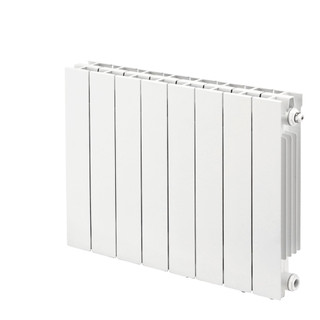
Aluminium Radiators 4u
Trade Essentials Aluminium Designer White Horizontal Radiator H590mm X W660mm
Price:£255.64 - Heat Pump Ready
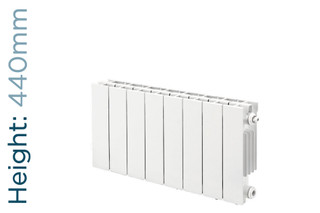
Aluminium Radiators 4u
Trade Essentials Aluminium Designer White Horizontal Radiator H440mm X W1140mm
Price:£445.27 - Heat Pump Ready

Aluminium Radiators 4u
Trade Essentials Aluminium Designer White Vertical Radiator H1846mm X W500mm
Price:£729.84 - Heat Pump Ready
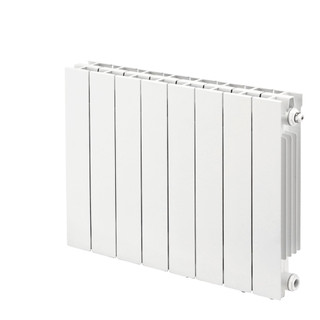
Aluminium Radiators 4u
Trade Essentials Aluminium Designer White Horizontal Radiator H590mm X W820mm
Price:£319.54 - Heat Pump Ready

Aluminium Radiators 4u
Trade Essentials Aluminium Designer White Horizontal Radiator H590mm X W980mm
Price:£383.45 - Heat Pump Ready
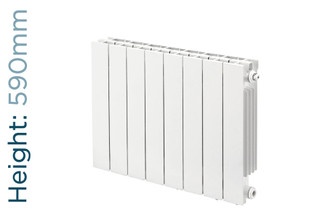
Aluminium Radiators 4u
Trade Essentials Aluminium Designer White Horizontal Radiator H590mm X W1140mm
Price:£447.35 - Heat Pump Ready
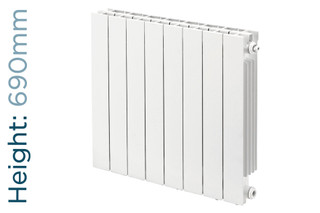
Aluminium Radiators 4u
Trade Essentials Aluminium Designer White Horizontal Radiator H690mm X W1140mm
Price:£470.72 - Heat Pump Ready
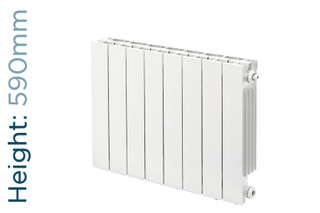
Aluminium Radiators 4u
Trade Essentials Aluminium Designer White Horizontal Radiator H590mm X W420mm
Price:£159.77 - Heat Pump Ready

Aluminium Radiators 4u
Trade Essentials Aluminium Designer White Horizontal Radiator H440mm X W660mm
Price:£254.45 - Heat Pump Ready
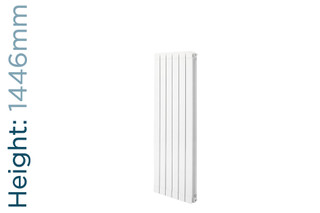
Aluminium Radiators 4u
Trade Essentials Aluminium Designer White Vertical Radiator H1446mm X W260mm
Price:£306.50 - Heat Pump Ready

Designer Radiators 4u
Infinity Aluminium Designer Radiator - Heat Pump Ready - White Horizontal - H657mm X W500mm
Price:£215.53 - Heat Pump Ready
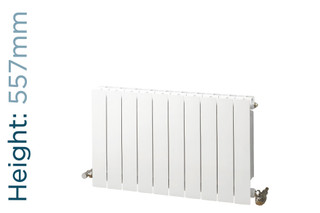
Designer Radiators 4u
Infinity Aluminium Designer Radiator - Heat Pump Ready - White Horizontal - H557mm X W500mm
Price:£207.25









